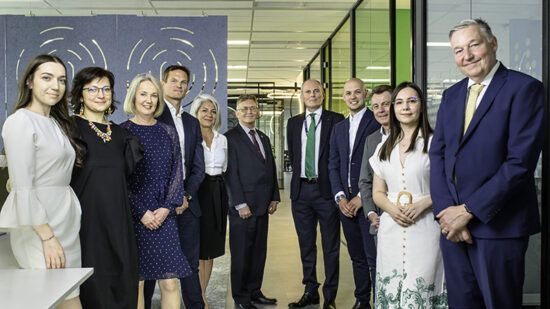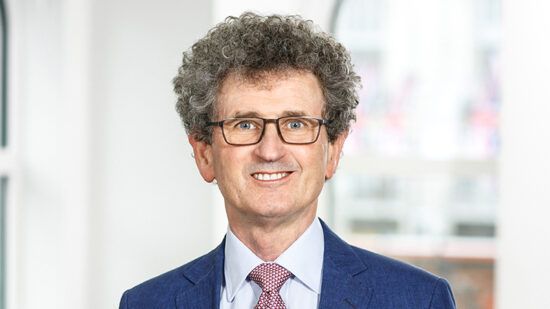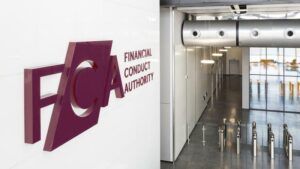Moving into 2025, the stewardship and governance landscape for sustainable investors continues to evolve and fund selectors face a complex interplay of challenges, opportunities and responsibilities, influenced by global regulatory shifts, new engagement priorities and broader societal expectations.
While environmental concerns remain at the top of the investor agenda, particularly as wildfires in Los Angeles highlight the devastating impact of climate change, fund selectors also want the companies they invest in to think about their impact on worker rights and public health. Add to this Donald Trump’s presidential return in the US and the focus back on fossil fuels (‘drill, baby, drill’), it is clear to see the various challenges and hurdles investors have when it comes to engagement.
Here, PA Future takes a closer look at the trends shaping the year ahead, the tools that are proving effective in driving change, and the insights of leading industry figures who are at the forefront of this critical work.
Climate and beyond
Climate action remains a cornerstone of stewardship efforts and for Gemma Woodward, head of responsible investment at Quilter Cheviot, this is prevalent in their engagement both through direct and collaborative initiatives.
“Climate is a key focus both in our highest emitting direct holdings and our largest positions with third party managers. In the case of the latter, in order for us to navigate our climate ambitions we need to understand how these third-party managers are managing this.”
Biodiversity is also continuing to come into sharper focus. Woodward identified natural capital as a key theme for Quilter Cheviot engagement in 2025, while Amy Browne, stewardship lead at CCLA Investment Management pointed to new tools that are helping investors engage on this topic. “Frameworks like the Taskforce for Nature-related Financial Disclosures (TNFD) and the Nature Action 100 benchmark are showing where companies are failing to consider their biodiversity impact. These give us a robust framework for engagement.”
Human rights and social equity
Systemic risks, such as modern slavery and mental health, also remain critical areas for engagement and are increasingly on investors’ radar as we move into 2025. Browne shares how CCLA has taken a leadership role: “Modern slavery is an issue we believe exists in every listed business. Our benchmarks assess and rank companies on their public disclosures, and we’ve engaged with 65 UK companies, with 35 improving their tier ranking.”
Mental health is another area CCLA is renowned for its engagement and benchmarks: “Since launching our mental health benchmarks, we’ve had 151 engagements, leading to 62 companies improving their policies since 2022. It’s encouraging, but it’s a long game,” says Browne, underscoring the importance of sustained effort to drive change.
New challenges
But as stewardship efforts evolve, new challenges are emerging for sustainable investors to consider when engaging with companies, such as artificial intelligence (AI). Browne pointed out its dual implications: “AI can enhance data collection and analysis for stewardship purposes, but its environmental impact—such as water and land use—needs scrutiny. We also need to address ethical concerns like bias and accountability.”
Matt Crossman, stewardship director at Rathbones, expects AI to come into sharp focus at AGMs this year with investors addressing “transparency around the risks a company’s use of AI poses to both its customers and business, as well as board-level oversight of such risks”. As he wrote in PA Future, although AI is transforming how our lives and economies work, and helping to solve existential problems such as climate change, there are many things for investors to be mindful of.
“These possibilities don’t come without accompanying ESG risks. The main ESG risks associated with AI fall within the social and governance elements. This is where Rathbones’ stewardship team are focusing efforts to engage with companies in clients’ portfolios in an effort to guard against these risks.”
Public health, including the role of companies in marketing unhealthy products, is another pressing issue for engagement teams. “There’s a growing need for companies to acknowledge their impact on disease burdens caused by their products,” Browne says, highlighting this as a key area for future engagement.
Crossman noted a recent Food Foundations report found that “just seven of the 36 major UK food businesses benchmarked have moved to disclose data or set new targets for increasing sales of healthy and sustainable food since last year”.
Rathbones works on two collaborative engagement initiatives to address this from an investor standpoint: the Food Foundation’s Plating up Progress and ShareAction’s Healthy Markets initiatives. Further, at the end of last year, asset managers including CCLA, Pictet, LGIM and Greenbank joined ShareAction in writing to CEOs of food and drink giants such as PepsiCo, Kraft and Heinz to ask them to be more transparent about their impact on public health and specifically adopt nutrition standards.
Navigating regulatory complexity
The industry has seen a plethora of new regulatory requirements over the past one to two years, in the UK and Europe, as regulators attempt to squash greenwashing and make sustainable products clearer to the end consumer. This also presents challenges and opportunities for stewardship, according to Morningstar’s director of investment stewardship research Lindsey Stewart who pointed to the diverging regional approaches as a key issue. “In Europe, sustainable finance regulations aim to combat greenwashing but often create unintended barriers, such as excessive reporting burdens. In the US, we may see significant changes under a new administration, potentially reshaping shareholder proposals and reporting requirements.”
Leon Kamhi, head of responsibility at Federated Hermes, echoed this as he warned of the risks of overregulation: “If sustainable investing regulations continue to be prescriptive, they risk turning stewardship into a box-ticking exercise. Instead, investment managers need flexibility to narrate what they do and be held accountable by their clients for how effective they are.”
Tools for engagement
As stewardship evolves, more tools are being used as sustainable investors refine their engagement strategies to drive meaningful change. For example, collaboration is proving particularly effective. “We’ve built coalitions that pool investor resources to address systemic risks, mobilising over $10trn in assets under management to tackle issues like mental health and modern slavery,” said Browne.
Traditional tools are also being revisited. “Printed letters sent directly to CEOs have proven more effective than emails in eliciting responses,” Browne added, reflecting on CCLA’s experience with its mental health benchmark. AGM attendance remains valuable as well, offering opportunities for informal conversations with board members, as previously noted by EQ Investors’ head of sustainability, Louisiana Salge, who said attending AGMs as part of its work with ShareAction has “become firmly established as a platform to bring key sustainable issues to the attention of boards and the public.”
Proxy voting is increasingly used to express dissatisfaction, particularly around governance, Stewart added: “There’s been a lot of emphasis on fundamental governance principles like shareholder representation, one share, one vote. Also, there’s a growing trend of using director elections to hold companies accountable for their governance and sustainability performance, particularly when engagement hasn’t yielded results.”
However, he did highlight “fragmentation” when voting on environment and social issues, and there is a growing support for anti-ESG resolutions, particularly in the US – albeit this support remained at low levels last year.
Sustaining progress
Looking ahead, maintaining momentum in stewardship activities will be critical, while transparency and authenticity are also key.
City Hive co-CEO Mandy Kirby told PA Future governance underpins all these efforts, linking corporate values to business performance. “Stewardship requires a two-way relationship. Investors must send clear signals about governance expectations, while boards must engage with investors in a way that demonstrates transparency and a focus on company fundamentals.”
Kirby also emphasised the importance of resilience: “Investors need to hold steady and believe in the underlying progress their efforts are achieving. It can feel safer to focus on less contentious topics, but stewardship is about tackling systemic challenges and driving responsible business practices.”
Stewart added: “Fund managers will need to be clear about their goals and pay close attention to market signals to navigate this landscape effectively.”
As stewardship evolves, fund selectors play a pivotal role in holding managers accountable and ensuring their strategies align with long-term sustainability goals. The year ahead demands adaptability, innovation, collaboration, and ultimately a commitment to follow through with pressure on engaging companies – or divest.








